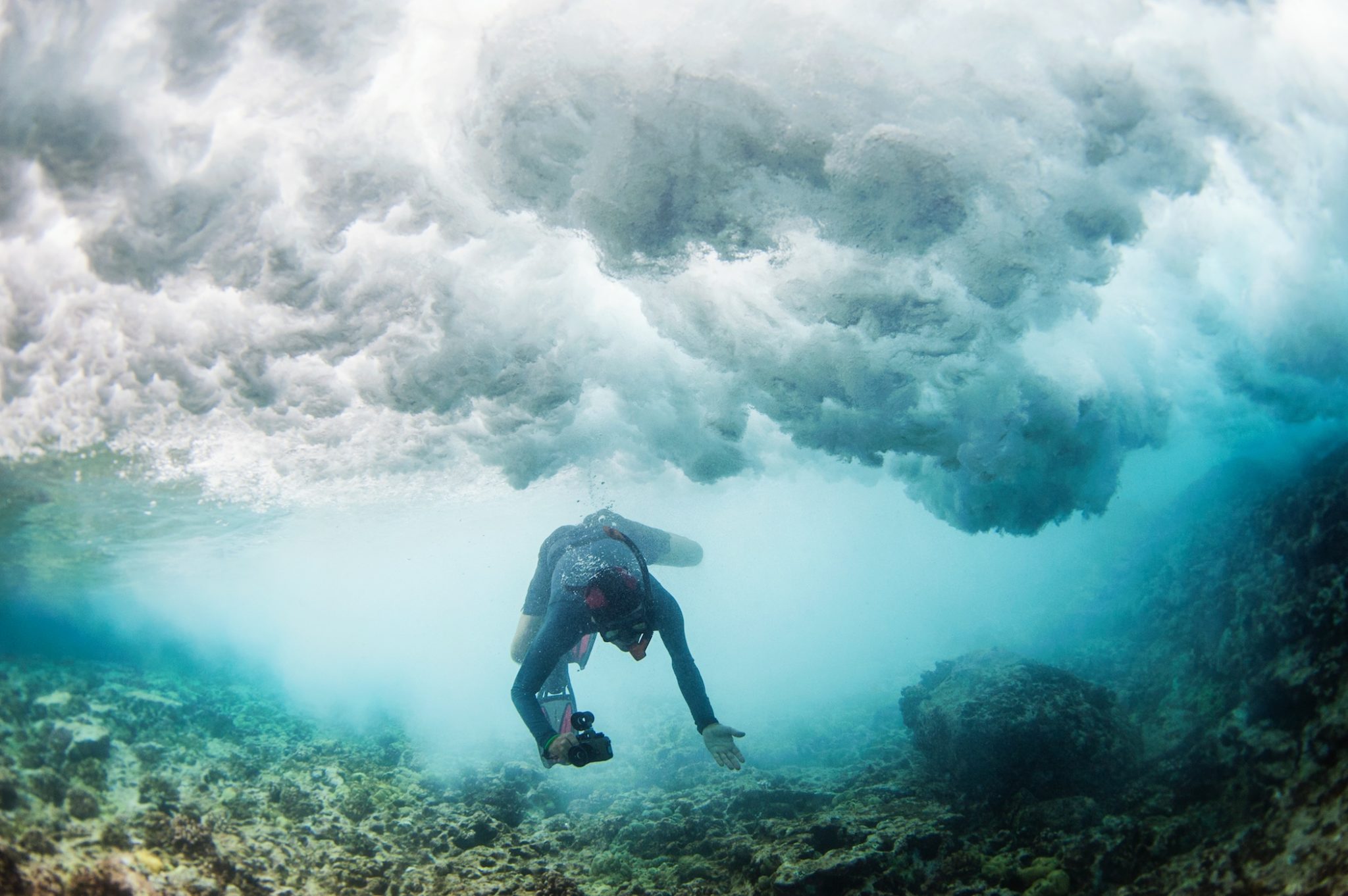Portrait images by John Hook
From now until March 30, see Levin’s work alongside others at “The Splendor of Light,” a show at Pauahi Tower’s mezzanine gallery in Honolulu.
When Wayne Levin took the train with his grandmother from Southern California to Portland, Oregon as a child, he saw life in freeze-frame rectangles for the first time. Those window-shaped mental pictures were early practice for a lifetime that would be spent framing images of some of the most incredible scenes on earth: massive schools of fish in swirling patterns, rare moments with undersea creatures, surfers ducking beneath sparkling clouds of whitewash, epic landscapes of lush forests and towering mountains.
Levin had a knack for photography from the moment he received his first camera at 12 years old as a present from his dad, a doctor who never pressured him to follow in his footsteps. “I got a lot of encouragement with my photography, and I felt like even at a young age, it was something I could do well,” remembers Levin, who went on to attend Brooks Institute of Photography in Santa Barbara after high school. His family moved to Hawai‘i in 1968, and Levin’s love of travel photography was sparked. He spent a year and a half sailing through the South Pacific and trekking through parts of Asia, Europe, Mexico, and Central America. These images would become the basis for his first solo exhibit at Gima’s Art Gallery in Honolulu.


In 1983, after receiving his BFA in photography from the San Francisco Art Institute and his MFA from Pratt Institute in New York City, Levin returned to Hawai‘i to teach photography at the University of Hawai‘i at Mānoa. It was here that he began to explore underwater photography for the first time.
“I loved the way it looked underwater to see the waves breaking on the shoreline,” Levin says. To capture this, he borrowed an underwater camera from a friend. But when he took it out into the ocean, he and the camera were pummeled by an onslaught of waves. “It’s not so much the wave bashing you on the rocks [you have to worry about] as it is when the wave sucks out,” he explains. “The water level will drop, and you get dragged over rocks or coral.” The experience was the best mistake he ever made, because he was obligated to trade one of his own camera lenses in exchange for keeping the scratched underwater camera, buying himself his first real look at the underwater world he was falling in love with.
In addition to his under-sea photography, Levin’s on-land work continued to garner wide recognition. Over the years, he worked as an assistant for environmentalist and renowned Hawai‘i photographer Robert Wenkham; documented the Kalaupapa Leprosy Settlement on Moloka‘i, which led to the book Kalaupapa: A Portrait; worked as an artist-in-residence at the Dayton Art institute in Ohio; and started the photography program at La Pietra, Hawaii School For Girls, where he would eventually marry his wife, Mary, in 1990, having met her at the old Amfac Gallery where they both had photos on exhibit.

Shortly thereafter, Levin moved to the sunny town of Kona on the Big Island, where his love of diving and underwater photography grew. Over time, his values in photographic work changed, too. Instead of producing just one stellar image, he became fascinated with communicating thoughts and emotions via a series of photographs.
For more than a decade, Levin photographed schools of akule, creating an impressive series of images depicting hundreds of dazzling fish moving through the water in precise spherical formations. “I loved the mesmerizing movement of the school, and the amazing shapes it made,” Levin says. “The coordination of the spontaneous movements and the tight mass of the school made it appear like a single entity, with the individual fish like cells within a larger organism.” The series was eventually published in 2010 in Akule, a book of black and white images of the impressive fish schools, with a second edition released in fall 2015.
Instead of focusing on eye contact, being up close, or getting the perfect angle, Levin’s photographs emphasize the relationship between the subjects and their environments. Candid moments of jellyfish and dolphins beside towering coral reefs, or intricate patterns on the sea floor made by the tides, are presented in stark black and white moments. “It’s a mysterious world a little bit beyond our comprehension, and I want to convey that,” Levin says. “With my underwater photography, I’m not trying to clarify the world beneath its surface, I’m trying to deepen the mystery.”
For more information, visit waynelevinimages.com.
This story is part of our The Sea issue.

